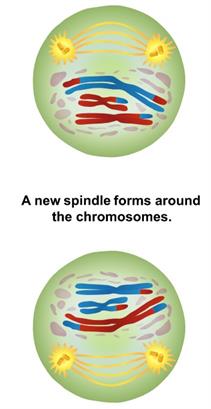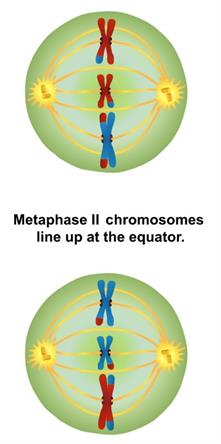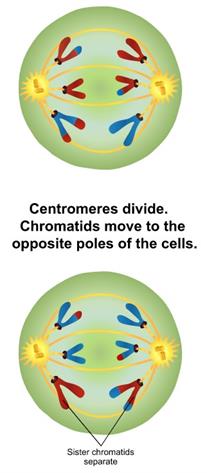PDF chapter test TRY NOW
We knew that two haploid cells are formed during the first meiotic division. These two cells will be further divided into four haploid cells in the meiotic II division. In this division, the daughter cells have the same chromosome number as the parent cells. Hence it is called homotypic division. Meiosis II begins after cytokinesis, which means before the chromosomes have fully elongated.

Meiosis II
It consists of five different stages.
- Prophase – II
- Metaphase – II
- Anaphase – II
- Telophase – II
- Cytokinesis – II
1. Prophase – II:
- Centrioles divides into two, and they move to the opposite poles.
- Asters and spindle fibres appear.
- Nucleolus and nuclear membrane disappear.

Prophase II
2. Metaphase - II:
- At this stage, chromosomes align at the equatorial plate.
- Then the spindle fibres get attached to the kinetochores of sister chromatids.
- Two chromatids are separated.

Metaphase II
3. Anaphase - II:
- During this stage, splitting of the centromere of each chromosome occurs.
- Separated chromatids become daughter chromosomes.
- They move to opposite poles due to the contraction of the spindle fibres.

Anaphase II
4. Telophase - II:
- Meiosis ends with this phase.
- Again, chromosomes are enclosed by nucleolus and nuclear membrane.
- The daughter chromosomes are possessed in the centre.

Telophase II and cytokinesis II
5. Cytokinesis:
Reference:
https://upload.wikimedia.org/wikipedia/commons/9/9c/Meiosis2.png
https://upload.wikimedia.org/wikipedia/commons/7/74/Meiosis_Stages.svg
